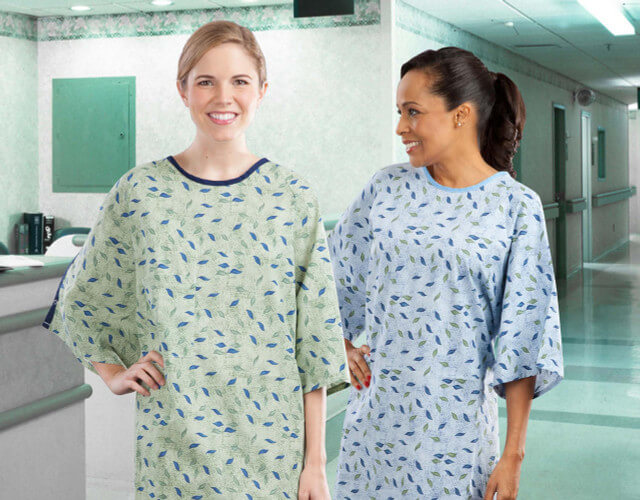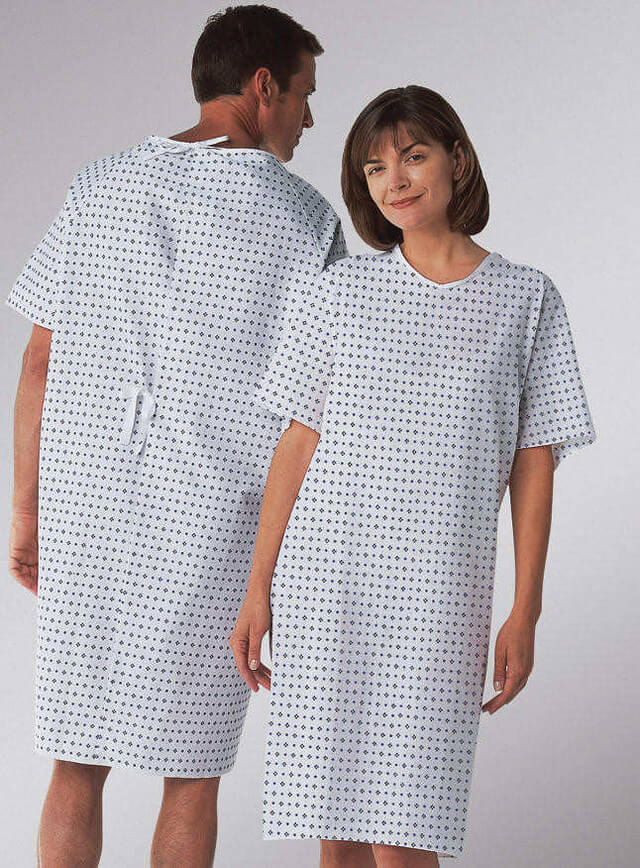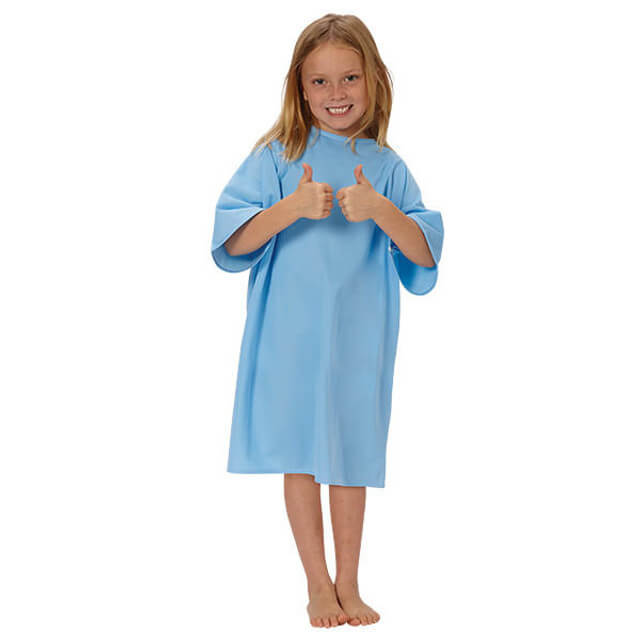Do Hospital Gowns Have Sizes? Decoding Patient Attire
Pediatric hospital gowns or adult patient gowns are a must-have in medical settings. Some may wonder about children's hospital gown design, purpose, and practicality. One of the questions that often arises is whether gowns come in different sizes. Below, we will look at key inquiries related to hospital gown design, patient expectations, and reuse practices.
Why Are Hospital Gowns Backless?
Hospital gowns and kids gowns are designed with an open-back style for several reasons. The backless design offers medical professionals easy access to the patient's body, allowing for examinations, treatments, and procedures without requiring patients to fully undress. This design not only facilitates medical care but also ensures the patient's comfort and modesty. Additionally, the open back allows for easier attachment of monitoring equipment, such as EKG leads or IV lines, without the need to remove the gown.
Do I Need to Bring My Own Hospital Gown?
In most cases, patients are not required to bring their own gowns. Healthcare facilities typically provide adult gowns, kids gowns, or pediatric gowns that are specifically designed for medical purposes. These gowns are made from materials that are easy to clean and disinfect, ensuring a sterile environment and reducing the risk of infections. Using facility-provided gowns also helps maintain uniformity and consistency in patient care.
However, if you have personal preferences or specific medical conditions that require particular clothing, it's a good idea to communicate with the healthcare staff in advance. Some patients may feel more comfortable bringing their own clothing, such as pajamas or loungewear, to wear underneath the hospital gown. While the hospital gown remains a standard part of patient attire, discussing your options with the medical team can help accommodate your needs and preferences.
Sizes of Hospital Gowns
Hospital gowns are made to provide patients comfort and accessibility during medical procedures and hospital stays. These gowns come in various sizes to accommodate patients of different body shapes and sizes while ensuring proper coverage and ease of movement. Let's delve into the sizes of gowns and how they are determined to meet the needs of patients effectively:
1. Standard Sizes: Hospital gowns are typically available in standard sizes ranging from extra-small (XS) to extra-large (XL) or even larger. These sizes are based on standardized measurements and fit guidelines established by manufacturers to accommodate a wide range of body types. Standard-sized gowns are commonly used in healthcare facilities as they offer a convenient and cost-effective option for stocking and inventory management.
2. Plus Sizes: In addition to standard sizes, hospitals may offer plus-sized gowns for patients who require larger dimensions for a comfortable fit. Plus-sized gowns are designed with extended measurements in key areas such as the chest, waist, hips, and sleeves to accommodate patients with larger body proportions. These gowns ensure proper coverage and comfort for patients of all sizes, promoting dignity and inclusivity in healthcare settings.
3. Pediatric Sizes: Pediatric gowns are specially designed for infants, children, and adolescents receiving medical care in hospitals and clinics. These gowns come in smaller sizes tailored to the unique proportions of pediatric patients, ensuring a secure and comfortable fit. Pediatric gowns often feature child-friendly designs, colorful patterns, and playful prints to help alleviate anxiety and promote a positive healthcare experience for young patients.
4. Bariatric Sizes: Bariatric hospital gowns are specifically designed for patients with obesity or larger body sizes who may require specialized garments for optimal comfort and coverage. These gowns offer generous dimensions and extended fabric panels to accommodate patients with a higher body mass index (BMI) while ensuring ease of movement and accessibility for medical procedures. Bariatric gowns play a crucial role in promoting dignity and respect for patients with diverse healthcare needs.
5. Maternity Sizes: Maternity hospital gowns are tailored to the unique needs of pregnant patients, providing ample room for a growing belly and accommodating changes in body shape during pregnancy. These gowns feature adjustable closures, stretchy fabric panels, and strategic gathers to ensure a comfortable and supportive fit for expectant mothers. Maternity gowns allow pregnant patients to maintain their modesty and comfort while receiving prenatal care, labor, and postpartum support in hospital settings.
Do Hospital Gowns Get Reused?
In most healthcare settings, hospital gowns are not intended for reuse. Due to concerns about hygiene, infection control, and patient safety, disposable gowns are often used. After a patient's use, hospital gowns are typically treated as medical waste and are disposed of in a proper manner.
The risk of contamination and the importance of maintaining a sterile environment necessitate the use of fresh gowns for each patient. However, some hospitals may have laundering processes in place for gowns used in specific, lower-risk areas, such as recovery rooms. These gowns undergo rigorous cleaning procedures to ensure they are properly sanitized before being used again. Nevertheless, the trend in many healthcare facilities is moving toward using single-use gowns to maintain the highest standards of hygiene and patient care.
Adult hospital gowns, or a children's hospital gown do not typically come in different sizes due to their open-back design, they serve an essential purpose in medical settings. The backless design allows for easy medical access while maintaining patient modesty. Patients generally do not need to bring their own gowns, as healthcare facilities provide appropriate attire. Additionally, due to infection control concerns, hospital gowns are often single-use items and are disposed of after each patient's use. Understanding the reasons behind hospital gown design and usage can help patients feel more at ease during their medical experiences. Direct Textile Store offers a variety of patient gowns in different sizes and designs to choose from.
Kelsi Kleven
Editor
Merchandising Specialist
If you need assistance, contact Direct Textile Store Customer Service at 800-615-5822






